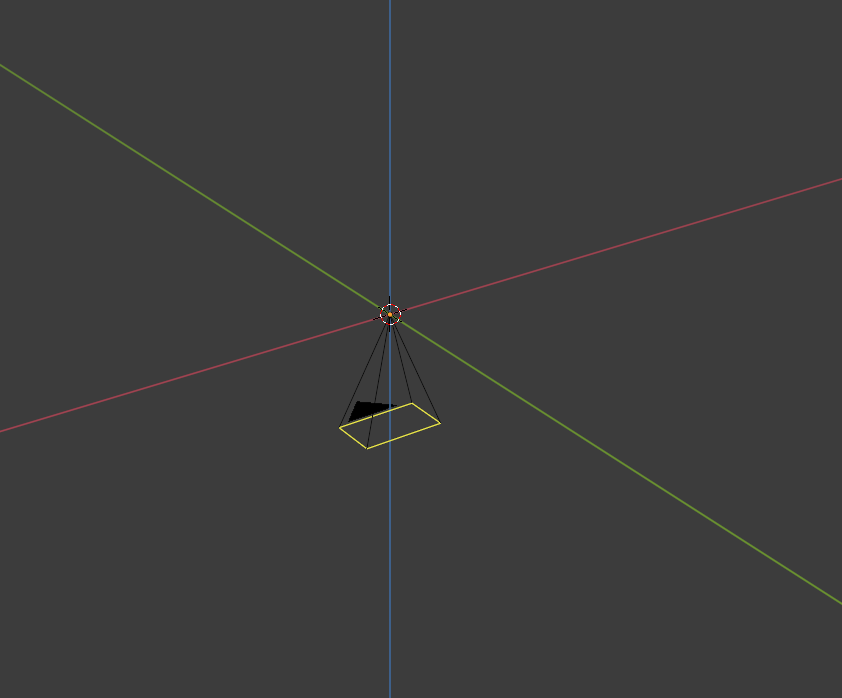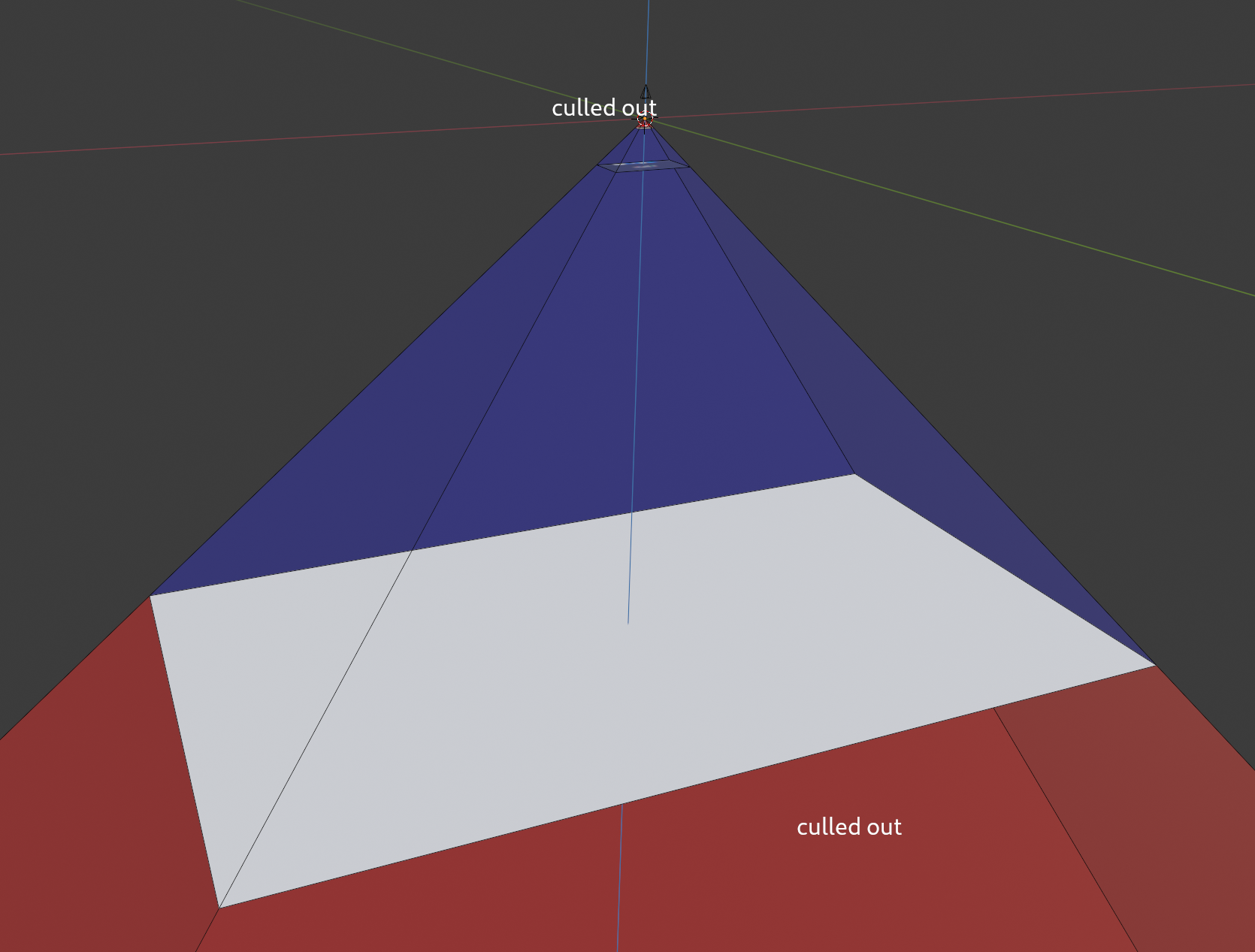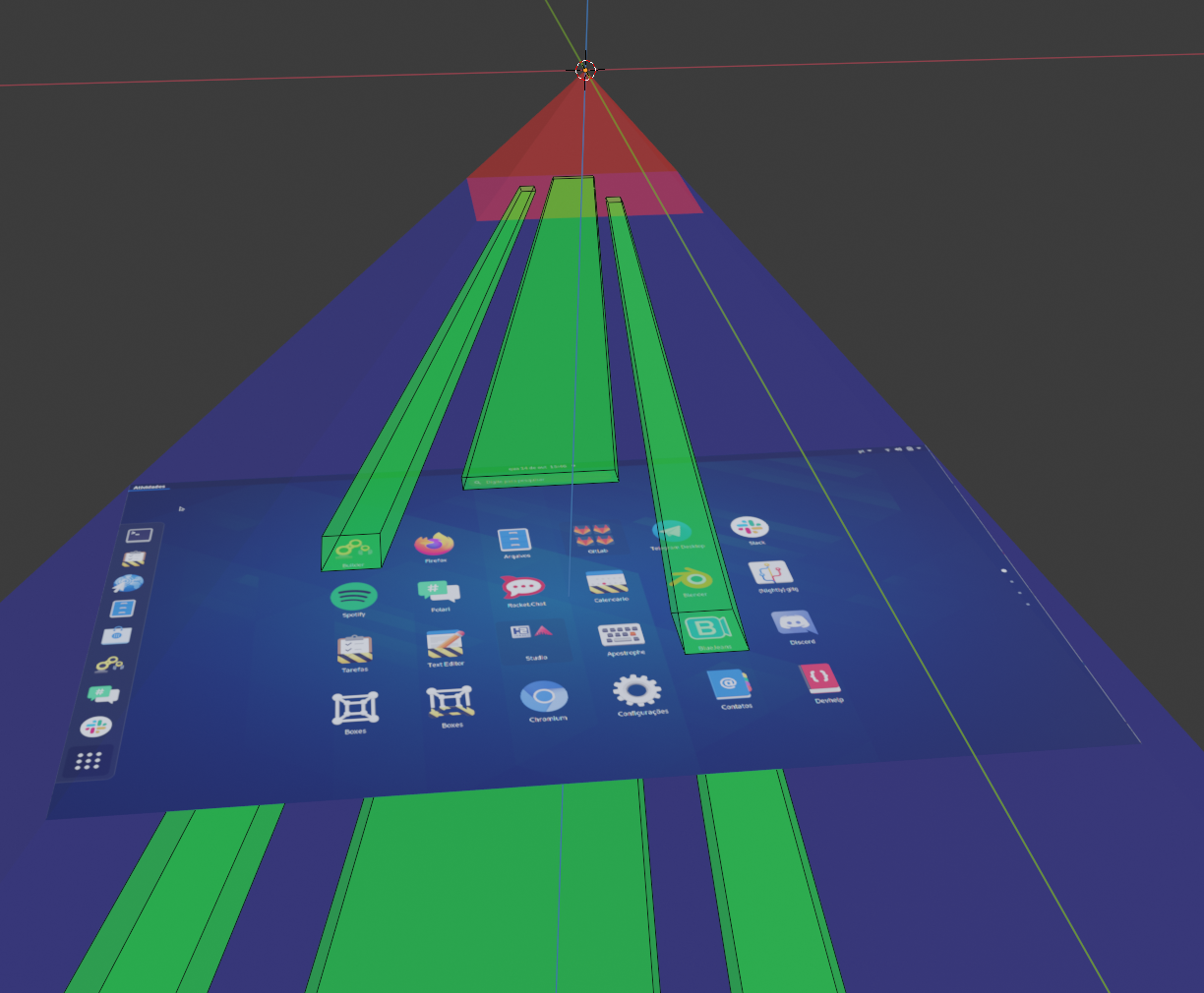This one was overlooked when we migrated the wiki to the repo, so let's add it before we delete the wiki. Part-of: <https://gitlab.gnome.org/GNOME/mutter/-/merge_requests/3485>
2.3 KiB
Clutter Rendering Model
Clutter renders the stage and actors in a 3D space. Most of the time, all the scene is composed of only 2D actors. Remember that common operations, like rotating on the Z axis, and scaling and translating on the X or Y axis, do not make actors 3D, which allows Clutter to optimize rendering for 2D.
Camera
ClutterStage builds the view matrix (i.e. the matrix that transforms world coordinates into camera coordinates) assuming that the camera is placed at (0, 0, 0) with a normal (0, 0, -1). That means the camera is pointing down:
The camera is implicit, and as of now, hardcoded.
Perspective
When setting up the projection, ClutterStage uses a traditional perspective projection, with the addition of a "2D plane". The 2D plane (z-2d) is a plane in the Z axis that all the stage will be rendered into. The perspective projection is build with the following parameters:
- field of view Y: 60º (hardcoded)
- aspect: width / height (depends on monitor configuration)
- z-near: 1.0 (hardcoded)
- z-2d:
z-near + z-near * 49,36( = 50,36) - z-far:
z-2d + z-2d * tan(30°) * 20( = 631,97)
Culling
Figuring out what not to draw is an important optimization of the rendering process. Clutter relies on clip frusta to detect which actors it can skip drawing.
Depth Culling
The z-near and z-far values above are used to build the clip frusta, which culls out actors based on their position. If they're below than z-far, or above z-near, they are not rendered:
Clip Regions
Clutter supports defining which regions of the 2D screen changed. Suppose you hover a button; only the rectangle that that button cover is redrawn, instead of the entire screen. For example:
 GNOME Shell with 3 clip regions (green)
GNOME Shell with 3 clip regions (green)
This is translated to the 3D scene by using multiple clip frusta. Each frustum is a slice of the view cone, and only those actors and geometry and intersects it is rendered. If an actor doesn't touch any of the frusta, it is skipped when drawing.



